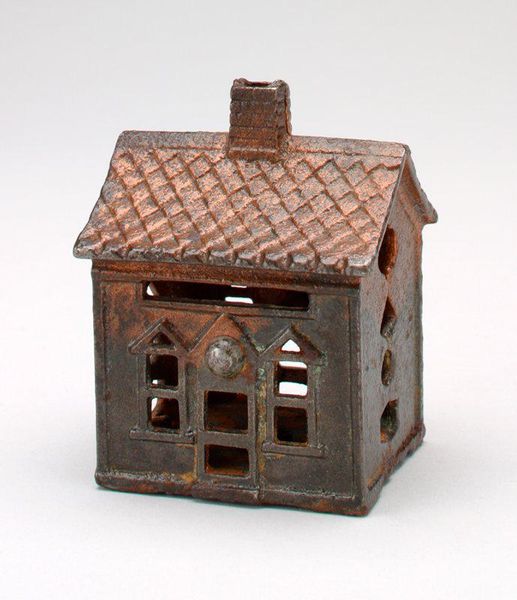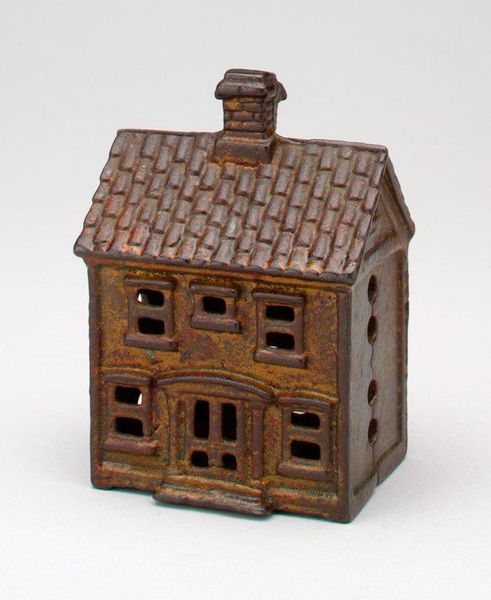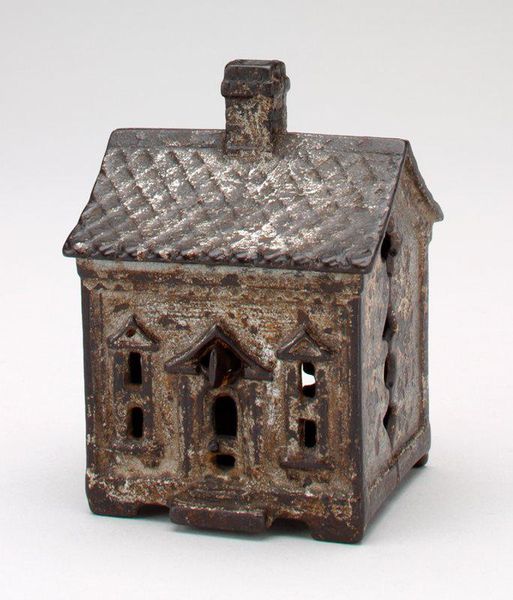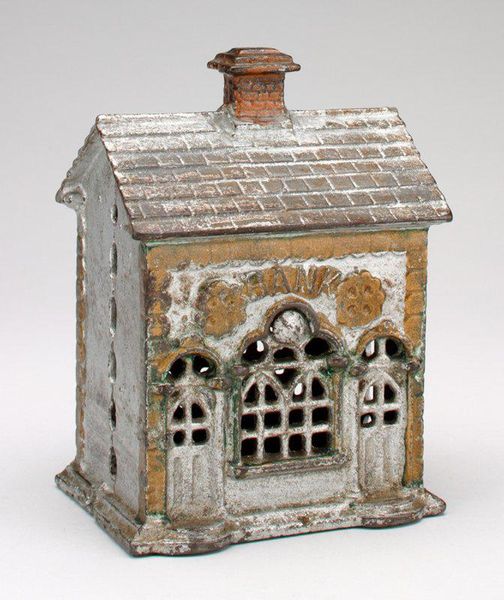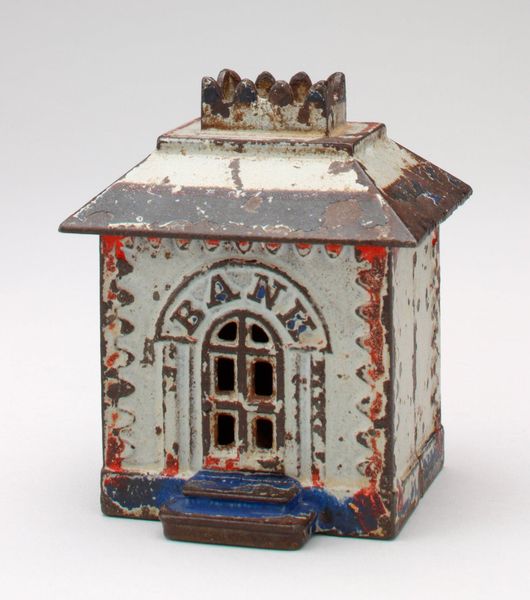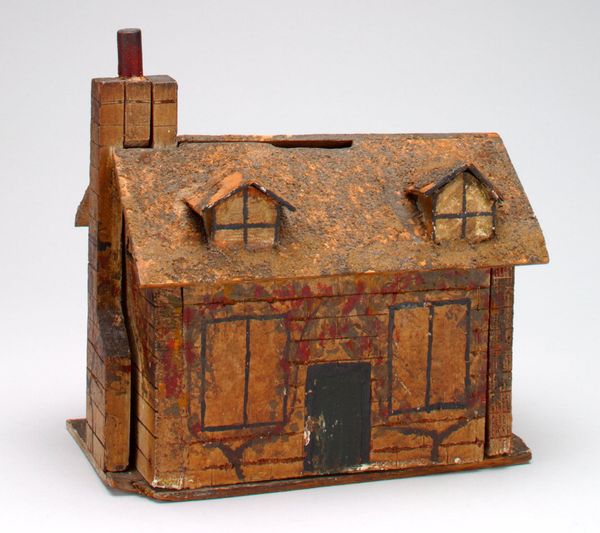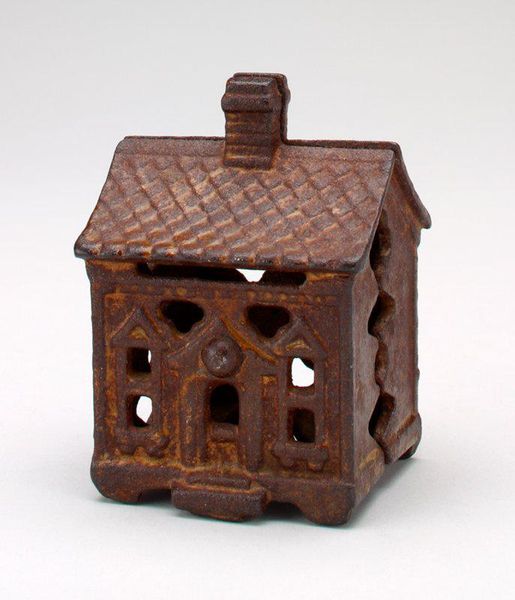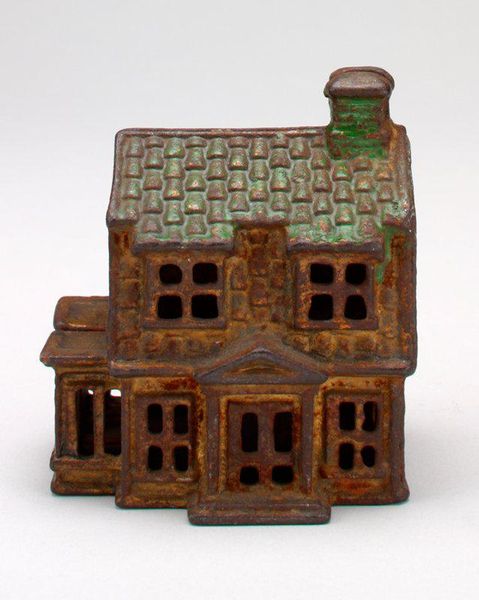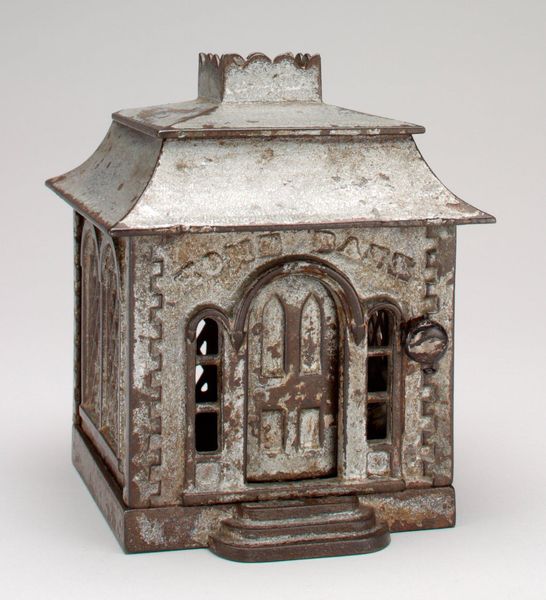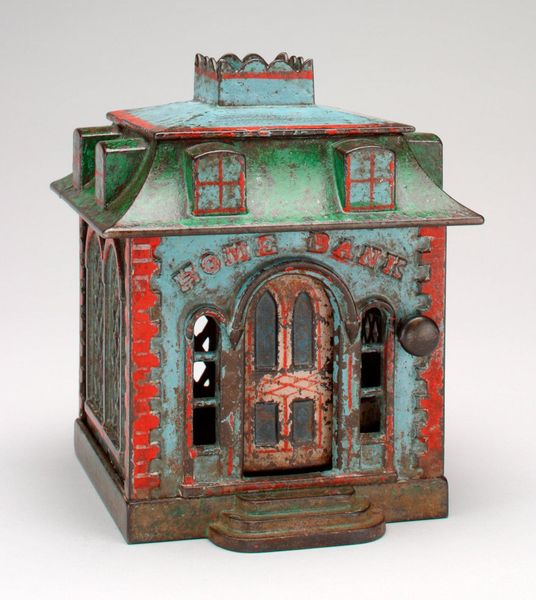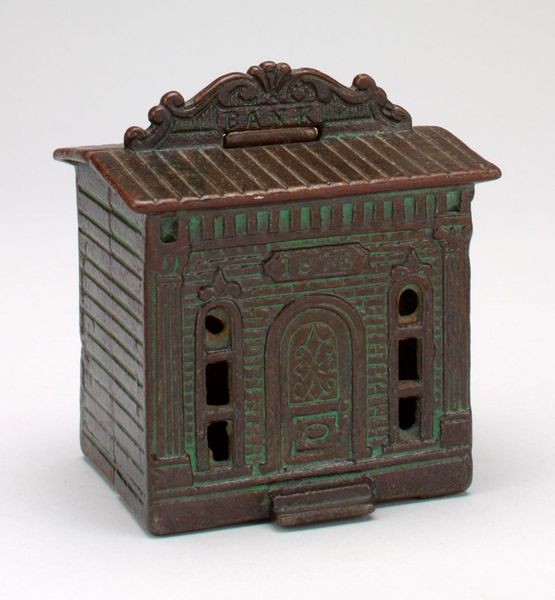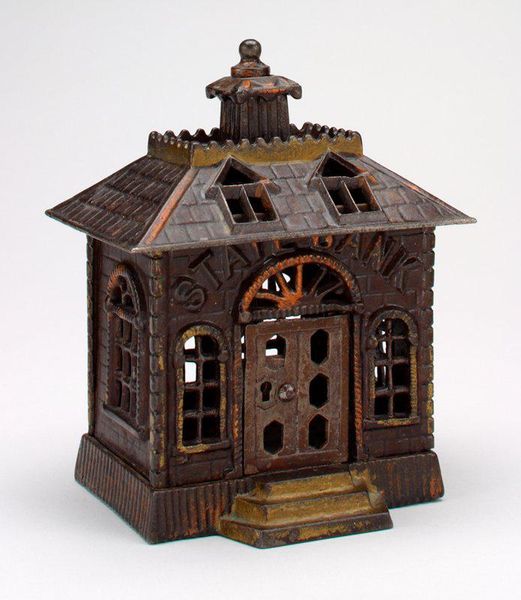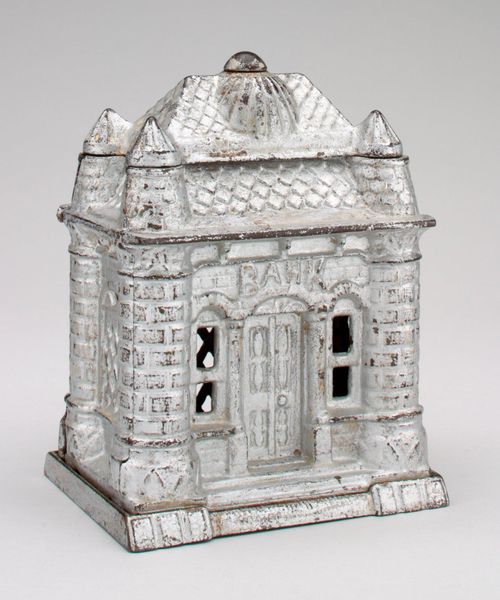
mixed-media, assemblage, metal, sculpture, architecture
#
mixed-media
#
assemblage
#
metal
#
figuration
#
folk-art
#
sculpture
#
decorative-art
#
architecture
Dimensions: 2 1/4 x 2 13/16 x 2 1/2 in. (5.72 x 7.14 x 6.35 cm)
Copyright: No Known Copyright
Editor: Here we have the A.C. Williams Company’s "-Two-Car Garage- still bank" from the late 1920s, made of metal. It has such a quaint feel to it. I wonder about its cultural significance; it’s almost like a little monument to the burgeoning car culture. What do you see in it? Curator: Precisely. Notice the material – cast iron. Consider its production. It's not just an object, but evidence of the American industrial machine geared toward the aspirations of a growing middle class. The 'still bank' function is also key; it encourages saving, feeding into capitalist desires for ownership. Editor: I hadn’t really considered the function of saving money. That definitely contextualizes the piece differently. How would that relate to its status as folk art? Curator: The line is blurry, isn't it? Is it "high art"? No. But consider the labor involved in its creation. The repetitive casting, the hand-painted details. This was everyday work. Decorative arts reflect the skills of ordinary people adapting industrial processes, not necessarily expressing some higher artistic calling. The materials themselves – metal, paint – speak of accessibility, mass production, and ultimately, consumption. It’s not a unique sculpture but something replicable. Editor: That is so fascinating! The repetitive labor aspect highlights its relation to commodity culture and manufactured consumer desires of the time. Thanks for this perspective! Curator: Absolutely. Examining its making unravels its meaning; seeing art as a product as much as a reflection enriches understanding.
Comments
No comments
Be the first to comment and join the conversation on the ultimate creative platform.
